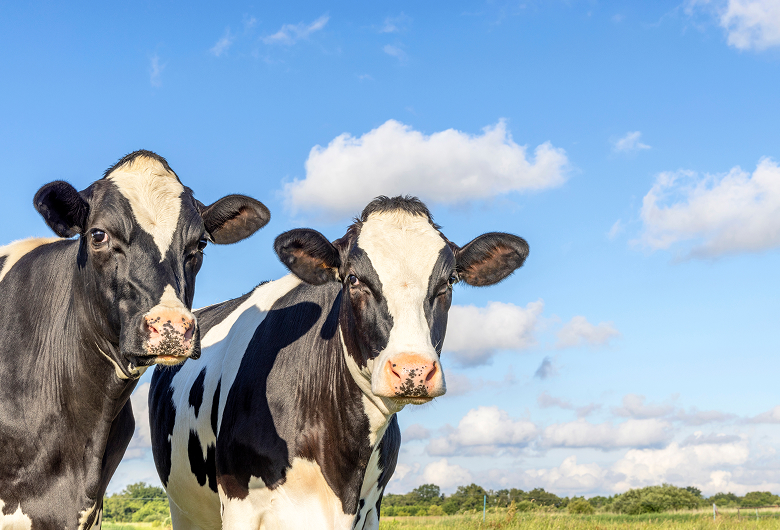

How to address hemorrhagic bowel syndrome (HBS) in today’s dairy herds
by Dr. Joel Pankowski, Senior Technical Service ManagerA silent, deadly syndrome
HBS is a condition impacting cattle, primarily high-producing adult dairy cows in their first three months of lactation. The first cases of HBS were documented in the 1990s and incidence continues to increase. Scientists have been unable to consistently identify causative agents for HBS. As a result, dairies that encounter the syndrome don’t see it coming.
We know that 80-100% of cows with HBS die1 and the syndrome progresses rapidly. Most cows succumb within the first 48 hours of showing symptoms; they experience an acute and sometimes massive hemorrhage in the small intestine which leads to the formation of blood clots that obstruct the passage of feed. The intestine becomes necrotic, causing septic shock and death. Cows with HBS are often found dead or dying. Treatment is typically unsuccessful for cows found alive, even with aggressive intervention. And survivors are likely to get HBS again.
The perfect storm for occurrence
No one factor causes HBS. Many factors contribute to a cow’s compromised immune system and gut integrity, which in turn allow pathogens to cause chaos. Factors contributing to the perfect storm may include:
- Grain harvesting conditions
- Feed storage conditions
- Ingredient mold and mycotoxin load
- Ensiling process
- Feed handling and mixing
All of these factors can be entry points for toxins and pathogens in feed.
Stressors stack up to a point where the cow can’t handle the insult anymore. Her gut integrity is compromised, and viruses, bacteria, and mycotoxins make their way through the gut wall and into her bloodstream, where they cause harm in vital organs. In the case of HBS, it’s hemorrhaging and clotting in the small intestine. HBS simply isn’t worth the risk, especially when considering an infected cow can cost thousands of dollars to replace. It's imperative that dairies take preventative measures to manage HBS risk and retain lactating cows in the herd. The good news is, there are cost-effective ways of doing so that cost just a few pennies more per cow per day than an average lactating cow diet.
Building a more resilient cow
The stronger a cow’s gut immunity, the more resilient she’ll be when faced with pathogenic
or environmental challenges. The more resilient the herd is, the less disease occurrence overall, lower disease severity and faster to recovery.
ARM & HAMMER’s additive portfolio can help strengthen cow gut health by:
- Targeting Clostridium perfringens, a pathogen commonly found at high levels in HBS occurrences.
- Preventing mycotoxins from causing damage to the gut by binding them, using a broad-spectrum binder.
- Protecting the gut and building gut integrity to help prevent pathogens and mycotoxins from spreading into the bloodstream, where they can cause damage to vital organs.
The use of additives specifically designed to protect the cow from pathogens helps ensure herd health. This, in turn, gives cows their best shot against HBS, and any other unknown threats.
Add specific tools to your toolbox
Most farmers are already using multiple additives. For just two cents more per cow per day than the average lactating diet, farmers can swap to an additive stack with science-based technology designed to build up gut health and manage pathogen risk.
The ARM & HAMMER™gut health trifecta:
CERTILLUS™
- For a healthy, strong gut
- Custom probiotic targets specific pathogens in the ration
- Strengthens the gut and addresses Clostridium challenges –a key factor in HBS occurrence
CELMANAX™
- For pathogen control and immune function
- Contains yeast extract with Refined Functional Carbohydrates™ which has been shown to manage pathogens in feed
- Helps prepare the immune system ahead of a challenge so animals can respond quickly
BG-MAX™
- For preventing mycotoxin damage and protecting the gut
- Yeast extract with Refined Functional Carbohydrates™ and highly refined bentonite to help reduce the impact of mycotoxins
- Enhances gut integrity overall, for stronger immune function and faster recovery in the face of other threats
Additive costs can add up. So, it’s most cost-effective to use products that build on one another, or work synergistically, to have a greater impact than any one or two products alone.
Arm & Hammer’s gut health products can help build a more resilient herd – with a longer-term positive impact on digestive health, feed efficiency and milk production. With a case of HBS costing up to $3,700 per cow over the course of a lactation2 , spending just two pennies more per cow per day is a no-brainer proactive strategy. It’s also a strategy that can have far-reaching impacts beyond protection from HBS.
Pennies now can save you thousands later.
Work with your ARM & HAMMER™ representative to build gut health, manage your risk for HBS and save in replacement costs.
1 Merck Veterinary Manual. Rev. Feb. 2021. Intestinal Diseases in Cattle. Hemorrhagic Bowel Syndrome. Accessed; Apr. 24, 2024. https://www.merckvetmanual.com/digestive-system/intestinal-diseases-in-ruminants/intestinal-diseases-in-cattle
2 Based on a one-time replacement cow cost of $2,500 and lost milk revenue of $1,200 for a 305-day lactation


